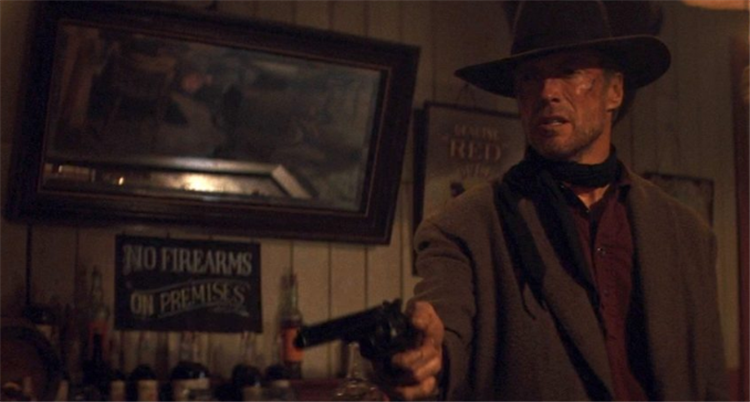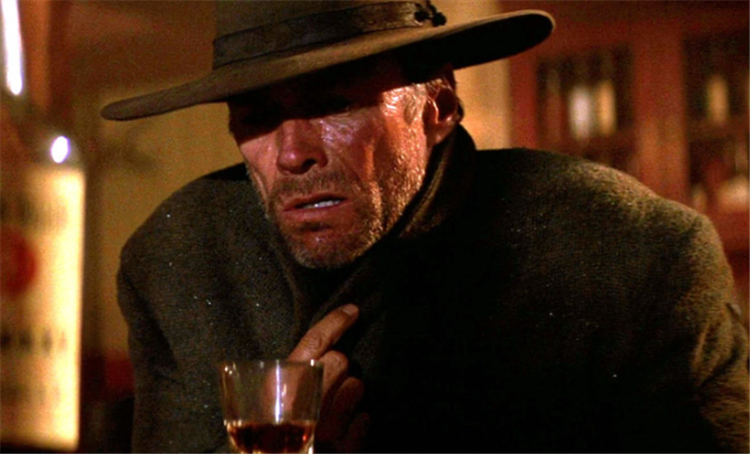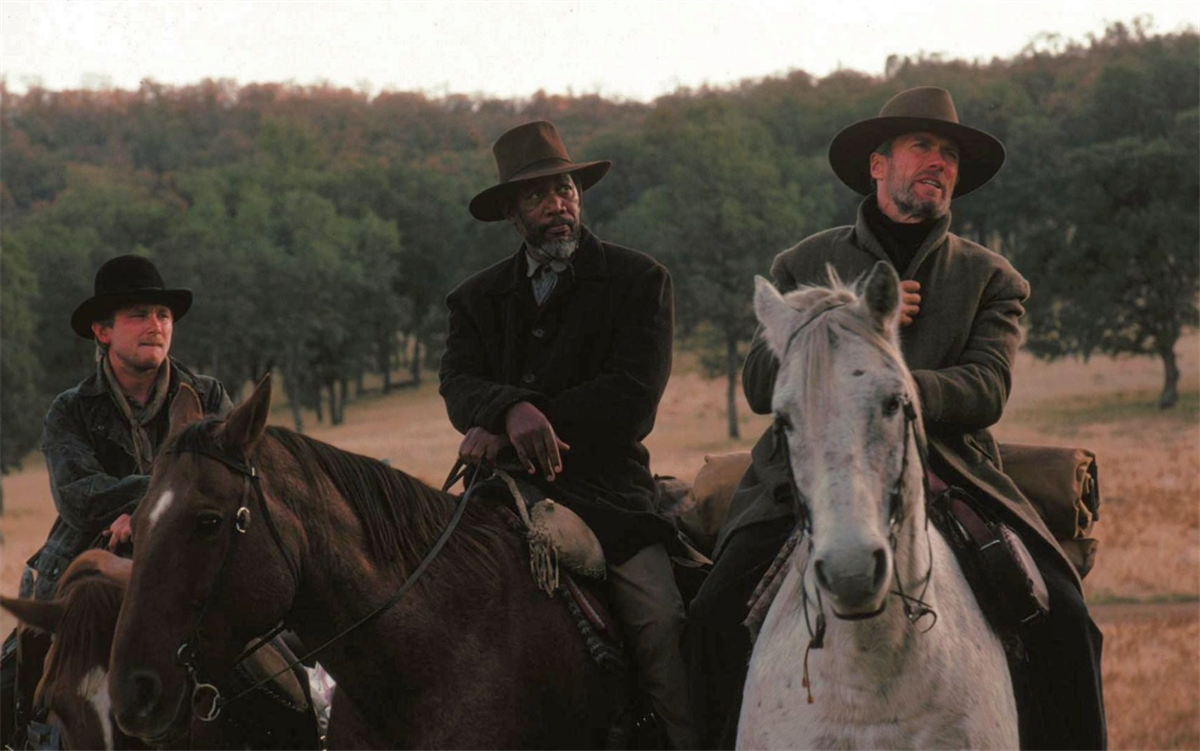Clint Eastwood’s Unforgiven (1992) tells the story of William Munny, a repentant widower who once lived the life of a ruthless gunman and outlaw. After marrying, the main character leaves his past behind and abandons his vices, which include gunfighting and killing. Even after his wife’s death, Munny has tried to sustain himself as a hog farmer alongside his children. When a hefty bounty is set on the heads of a pair of cowboys who slashed a prostitute’s face, the protagonist is pulled out of retirement and returns to the life he once discarded.
The film’s conclusion features a shoot-out scenario. Munny rides out of town after a brutal killing spree. A closing title card implies that the gunslinger and his children abandoned the farm and moved to San Francisco at a point in time. Unforgiven ended with movie-goers witnessing a deconstruction of the genre Eastwood is widely known for.
However, this wasn’t how the movie’s conclusion was initially meant to be. According to screenwriter David Peoples, the original ending contained an encounter evocative of Francis Ford Coppola’s The Godfather. The sequence, however, was omitted. Why, you could ask? Let’s have a look.
Clint Eastwood’s Unforgiven Initially Had A Different Ending

When discussing the 1992 Oscar-winning picture, Eastwood stated it would be his final traditional Western. The actor’s departure from the genre developed into the gift of Unforgiven. It elevates yet deconstructs the archetypal Western. Most of the magic behind the premise is owed to screenwriter David Peoples. Initially titled The William Munny Killings, a 1984 draft of the highly-exalted screenplay featured an additional ending scene. Clint Eastwood, the film’s director, shot the sequence precisely as written. However, no matter how compelling the original finale was, the actor-director decided to omit the scene.
How exactly did the deleted ending play out?
According to the screenwriter’s interview with Yahoo! Entertainment, the original ending concludes with Munny returning home and reuniting with his children after completing his “business” in Big Whiskey. Despite its sweetness, the interaction contains underlying tension. When questioned if he murdered anyone, Munny lies and asserts, “Naw, son. I didn’t kill nobody.”
Explaining the scrapped sequence’s significance, the writer stated the following:
“What’s good about that scene is that it means that the killings aren’t triumphant killings. Munny doesn’t say, ‘I killed that motherf***er.’ He’s ashamed of what he’s done.”
As stated by David Peoples, this finale was inspired by and is reminiscent of Francis Ford Coppola’s The Godfather. The ending to the 1972 film showed Al Pacino‘s character, Michael, lying to his wife Kay about his involvement in his brother-in-law, Carlo’s death.
But why was the original ending scene in Peoples’ screenplay abandoned? After all, that may have been a wonderful homage to Coppola’s vision. It was, the screenwriter admits, Clint Eastwood’s decision.
Why Was The Godfather Homage Deleted?

Peoples claimed that the film’s director believed the original conclusion wouldn’t be needed as the film felt complete without it. It would be a “beat too many.” While the screenwriter, who considers himself a sensitive writer, wished for the moment to be included in the film’s final cut, he recognized Eastwood’s outstanding sense of drama and rhythm. Following was the writer’s statement:
“He [Clint Eastwood] said he thought that it was a beat too many, and he wasn’t going to use it. He had this sense that the movie had already ended, and sticking on another scene wasn’t going to help. As the sensitive writer, I wish somehow it could have made it in, but he got the rhythm right. He has a brilliant sense of drama.”
David Peoples was the only one blessed enough to see the family reunion scene. It was never released for public viewing. It’s unclear if it’ll ever be published for the world to view. The writer further admitted that he had no idea what happened to the filmed material.
Either way, it doesn’t matter. As rightfully affirmed by Peoples, “[Clint Eastwood] made the movie, and it’s a beautiful movie.”
There is no need for additional details or scenes to build on the underlying themes of the 1992 movie.
Unforgiven was a big hit and is recognized as a significant entry in the history of revisionist Western cinema. It eventually made $159.2 million at the box office. The film is available for rent/purchase on Amazon Prime Video.
